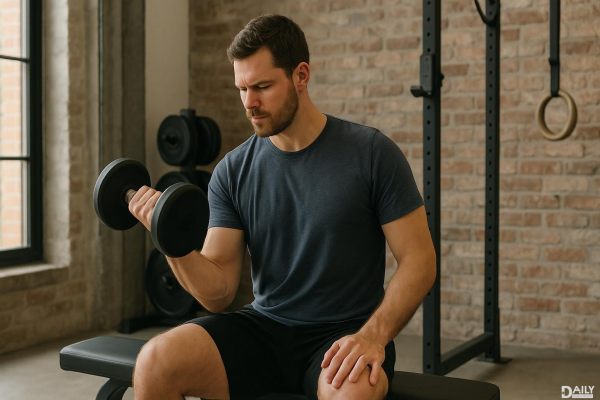Finding the ideal lifting weight for men to build strength without injury isn't about picking a magic number—it's about balancing challenge and control. A good rule of thumb is to choose a weight that allows you to perform 4-6 reps with proper form while still feeling like the last couple reps are tough but doable. This sweet spot maximizes muscle engagement without sacrificing safety. But let’s break it down further because, let’s be real, strength training isn’t one-size-fits-all.

If you’ve ever wandered into the gym and just started throwing around whatever weight feels "heavy enough," you’re not alone—but there’s a smarter way. Strength gains happen fastest in the 4-6 rep range because it’s heavy enough to stimulate muscle and nervous system adaptation without pushing you into the danger zone where form crumbles. Lighter weights (8-12 reps) are great for muscle growth, and super-heavy loads (1-3 reps) are for pure strength, but the middle ground is where most guys should live if injury-free progress is the goal. The key? If you can breeze through 6 reps without breaking a sweat, it’s time to add weight. If you’re grinding out reps with a face like you’re solving world hunger, dial it back.
New to lifting? Don’t just mimic the dude grunting next to you. Start with a weight that feels manageable for 8-10 reps—yes, lighter than the ideal strength range—to nail down form. After a couple of weeks, test your 5-rep max (the heaviest weight you can lift 5 times cleanly). That number becomes your benchmark. From there, aim to add 2.5–5 lbs per week for upper body lifts and 5–10 lbs for lower body. Slow and steady wins the race, and your joints will thank you later.
Here’s the hard truth: No weight is "safe" if your form’s a mess. Ever seen someone squat with knees caving in or deadlift with a back rounded like a question mark? That’s a one-way ticket to Snap City. Before chasing numbers, invest time in mastering technique. Film yourself, hire a coach for a session, or at least watch reputable tutorials (not just the most viral gym bro). A properly executed lift with moderate weight builds more strength long-term than sloppy max attempts.
Progress isn’t linear. Some days, your 5-rep weight will feel like a toy; other days, it’ll crush you. Listen to your body—fatigue, stress, and sleep matter. If you’re consistently failing reps or feeling joint pain, deload (reduce weight by 10–20% for a week). Conversely, if a weight’s been easy for multiple sessions, it’s green light to bump it up. Ego lifting leads to injuries; smart progression leads to PRs.
Belts, wraps, and straps aren’t cheat codes—they’re tools with specific uses. A belt can help brace your core for heavy squats or deadlifts, but relying on it for every lift weakens your natural stability. Same goes for wrist wraps or knee sleeves: great for top sets, but don’t let them mask weaknesses. And for the love of gains, don’t use momentum (aka "kipping" or swinging) to fake heavier lifts. Control beats chaos every time.
Muscles grow when you rest, not when you lift. Skimp on sleep or nutrition, and you’ll stall (or worse, regress). Aim for 7–9 hours of sleep, prioritize protein (0.7–1g per pound of body weight), and don’t ignore mobility work. Tight hips or shoulders will eventually limit your lifts or cause compensations that lead to injury. Yoga or dynamic stretching isn’t just for influencers—it’s armor for your joints.
Building strength safely isn’t about maxing out every session or obsessing over the scale’s numbers. It’s about consistency, patience, and respecting the process. Find a weight that challenges you without breaking you, master the movement, and let the gains come naturally. Your future self—still lifting pain-free at 50—will high-five you for it.
























